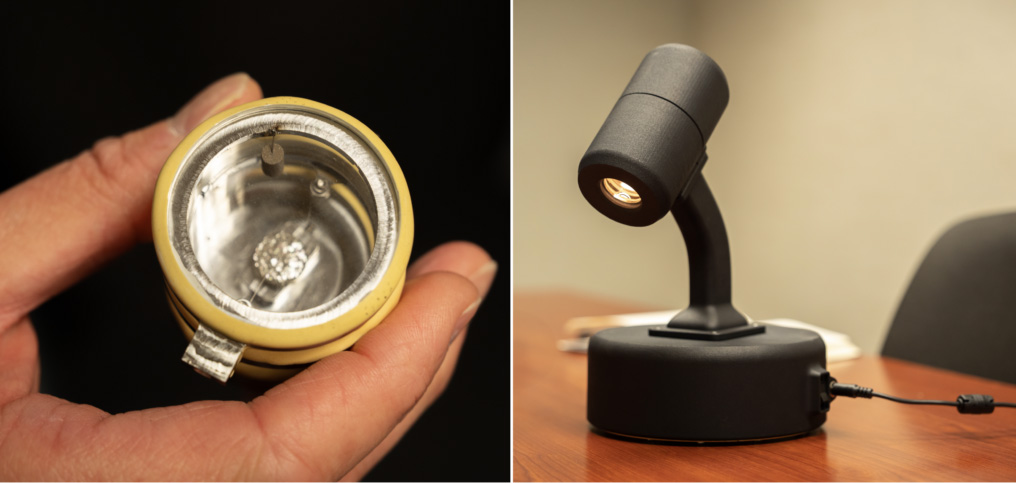News: LEDs
31 October 2024
NS Nanotech releases first solid-state semiconductor to produce human-safe disinfecting UV light
In the midst of the COVID-19 pandemic, many people became acutely aware of airborne viral spread. In addition to COVID, the common cold, respiratory syncytial virus (RSV), measles and the flu may all be passed between people through the air they breathe. NS Nanotech Inc of Ann Arbor, MI, USA — a University of Michigan Electrical and Computer Engineering (ECE) spin-off co-founded by professor Zetian Mi in 2017 with the help of Innovation Partnerships — has designed a solution to mitigate this airborne infection.
Since the late 19th century, it has been known that ultraviolet light kills micro-organisms, especially at the short UV-C wavelengths (180–280nm). Traditionally, low-pressure mercury bulbs have been used to generate UV-C light around 254nm, to disinfect air, water and surfaces. However, this wavelength is dangerous to human skin and eyes, so it is restricted to settings and applications where humans are not immediately present. This leaves a gap in places where patients, healthcare workers and the general public may be exposed to airborne infection, especially in small, enclosed spaces.
To fill this gap in protection, NS Nanotech developed a far-UVC ShortWaveLight 215 Emitter, which safely disinfects air and surfaces in spaces where people are working and going about their daily lives. Now available to manufacturing partners and application developers, the device is a nitride semiconductor cathodoluminescent lamp, which is said to be much cheaper and easier to deploy than the existing state-of-the-art devices on the market (222nm-emitting krypton chloride excimer lamps).

Picture: Left: NS Nanotech far-UVC ShortWaveLight 215 Emitter device. Right: The ShortWaveLight 215 Emitter built into a lamp to demonstrate its light. Photos: Jero Lopera.
Mi’s research group has developed III–nitride materials and semiconductors, optoelectronic devices, light-emitting diodes, and UV photonics, for a range of research applications, including water and air purification and disinfection.
The semiconductor-based technology offers an alternative path for air purification and disinfection compared with conventional, inefficient and bulky gas lamps, says Mi. “Moreover, operating in the far UV-C spectrum, it is safer and more effective than traditional UV light,” he adds.
“To the best of our knowledge, this is the highest-energy photon any semiconductor device has ever made, in any market, anywhere,” reckons NS Nanotech’s co-founder & CEO Seth Coe-Sullivan. “The light still does a great job of killing germs but it won’t penetrate our dead skin cells or the tear layer at the front of our eye. We think this product is really great for confined spaces, what we call ‘personal breathing zones’.”
The NS Nanotech team is starting with enclosed, high-value spaces for deployment of the lamps. Many of these applications are in the transportation industry, such as ambulances, school buses, and shuttles for senior citizens. Since the ShortWaveLight 215 Emitter is reckoned to be the first of its kind in the world, NS Nanotech is helping its customers to design the consumer products that will ultimately be deployed in these spaces.
“By marketing business-to-business, we really want a broad set of customers to be able to try this out and deploy it,” Coe-Sullivan says.
NS Nanotech hopes to continue the work by developing far-UVC LED lights for the same applications, a process that requires more complex technologies and a longer timeline.
NS Nanotech showcases portable far-UVC ShortWaveLight Purifier at CES









